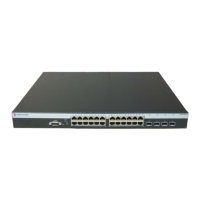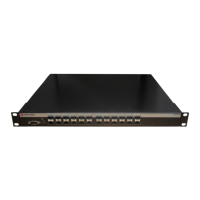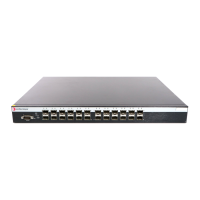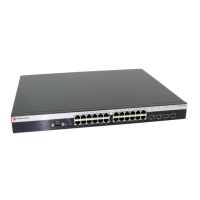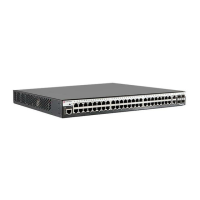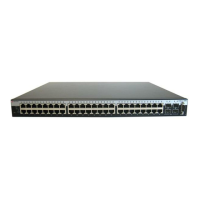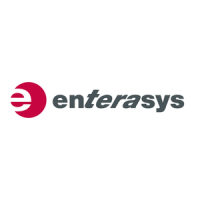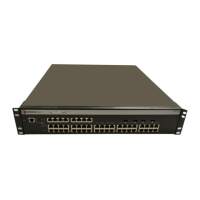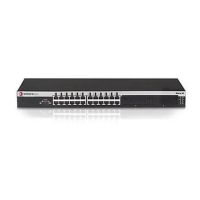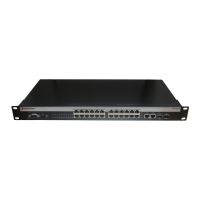VLAN Support on Enterasys Switches
9-6 Configuring VLANs
If a unicast untagged frame is received on Port 5, it would be classified for VLAN 50. Port 5 has its
own filtering database and is not aware of what addressing information has been learned by other
VLANs. Port 5 looks up the destination MAC address in its FID. If it finds a match, it forwards the
frame out the appropriate port, if and only if, that port is allowed to transmit frames for VLAN 50.
If a match is not found, the frame is flooded out all ports that are allowed to transmit VLAN 50
frames.
VLAN Support on Enterasys Switches
Maximum Active VLANs
The total number of active VLANs supported on Enterasys stackable and standalone fixed
switches is up to 1024.
Configurable Range
The allowable user-configurable range for VLAN IDs (VIDs) is from 2 through 4094. This range is
based on the following rules:
• VID 0 is the null VLAN ID, indicating that the tag header in the frame contains priority
information rather than a VLAN identifier. It cannot be configured as a port VLAN ID (PVID).
• VID 1 is designated the default PVID value for classifying frames on ingress through a
switched port. This default can be changed on a per-port basis.
• VID 4095 is reserved by IEEE for implementation use.
VLAN Types
Enterasys switches support traffic classification for the following VLAN types.
Static and Dynamic VLANs
All VLANs on an Enterasys switch are categorized as being either static or dynamic. Static VLANs
are those that are explicitly created on the switch itself, persistently remaining as part of the
configuration, regardless of actual usage. Dynamic VLANs, on the other hand, are not necessarily
persistent. Their presence relies on the implementation of GVRP and its effect on egress
membership as described in “GARP VLAN Registration Protocol (GVRP) Support” on page 9-7.
Port-Based VLANs
Port-based VLANs are configured by associating switch ports to VLANs in two ways: first, by
manipulating the port VLAN ID (PVID); and second, by adding the port itself to the egress list of
the VLAN corresponding to the PVID. Any traffic received by a port is associated to the VLAN
identified by the port's PVID. By virtue of this association, this traffic may egress the switch only
on those ports listed on the VLAN's egress list. For example, given a VLAN named “Marketing,”
with an ID value of 6, by changing the PVID values of ports 1 through 3 to 6, and adding those
ports to the egress list of the VLAN, we effectively restrict the broadcast domain of Marketing to
those three ports. If a broadcast frame is received on port 1, it will be transmitted out ports 2 and 3
only. In this sense, VLAN membership is determined by the location of traffic ingress, and from
Notes: Each VLAN ID in a network must be unique. If you enter a duplicate VLAN ID, the Enterasys
switch assumes you intend to modify the existing VLAN.
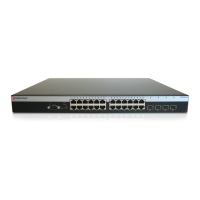
